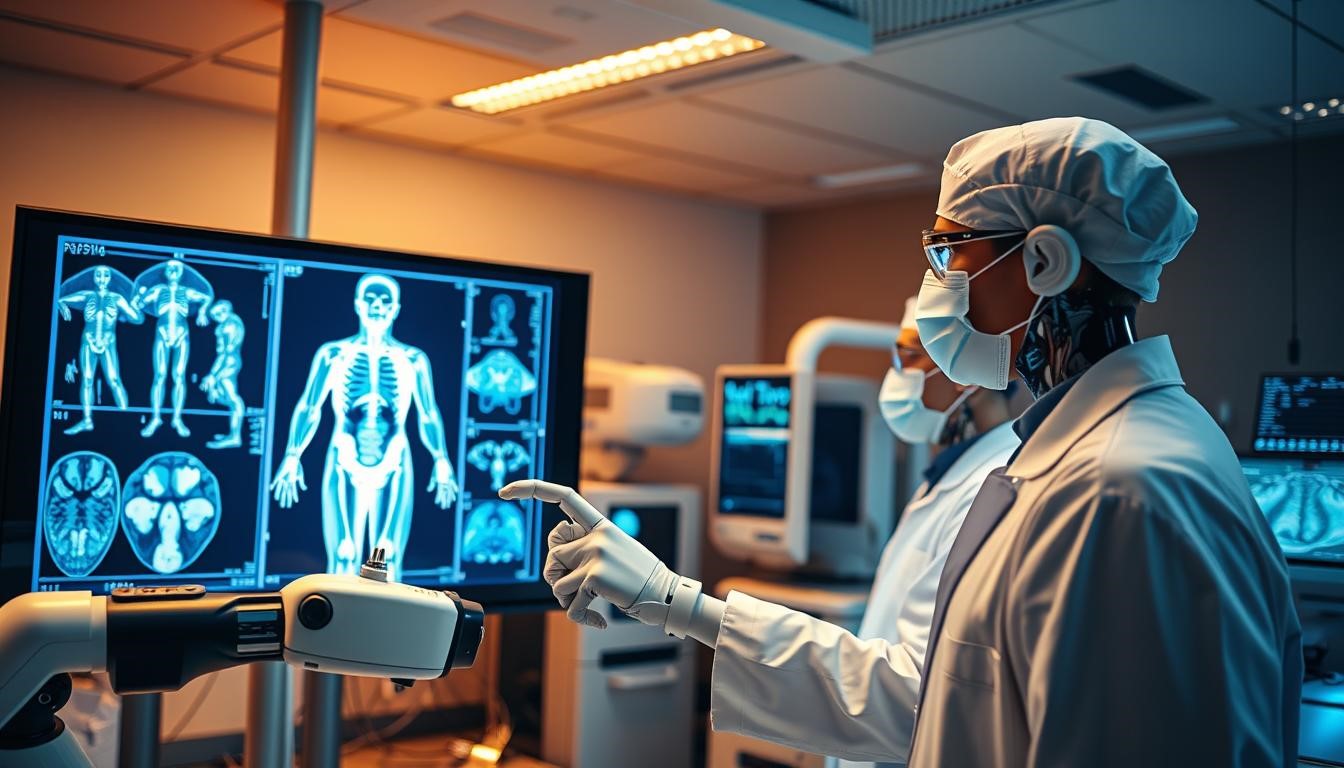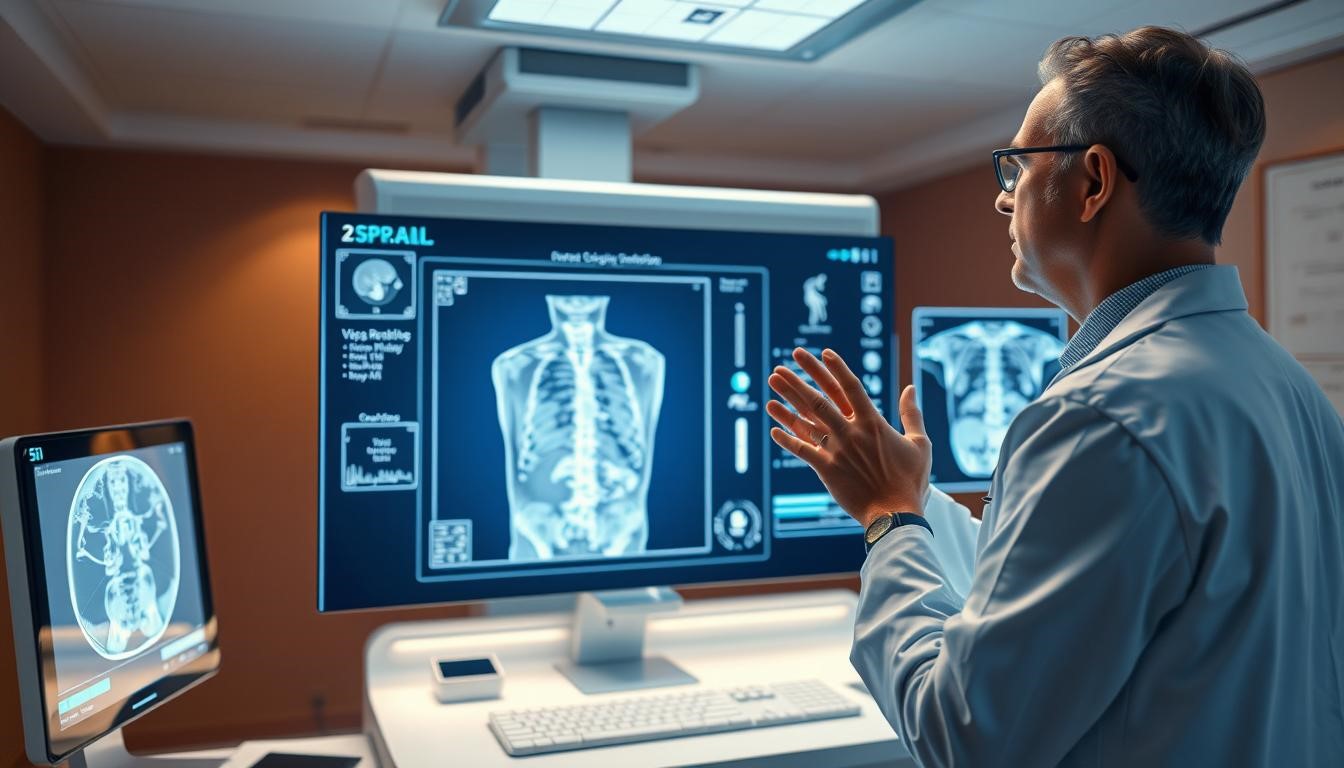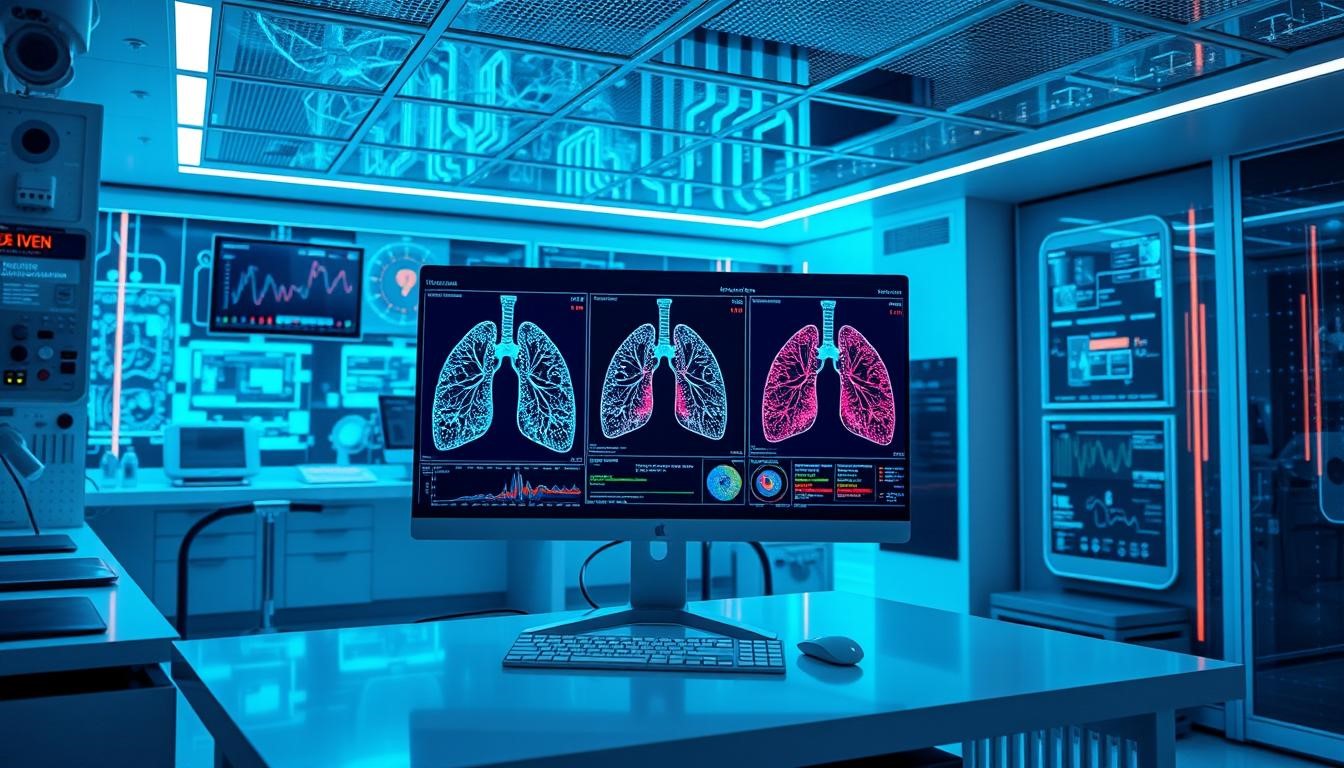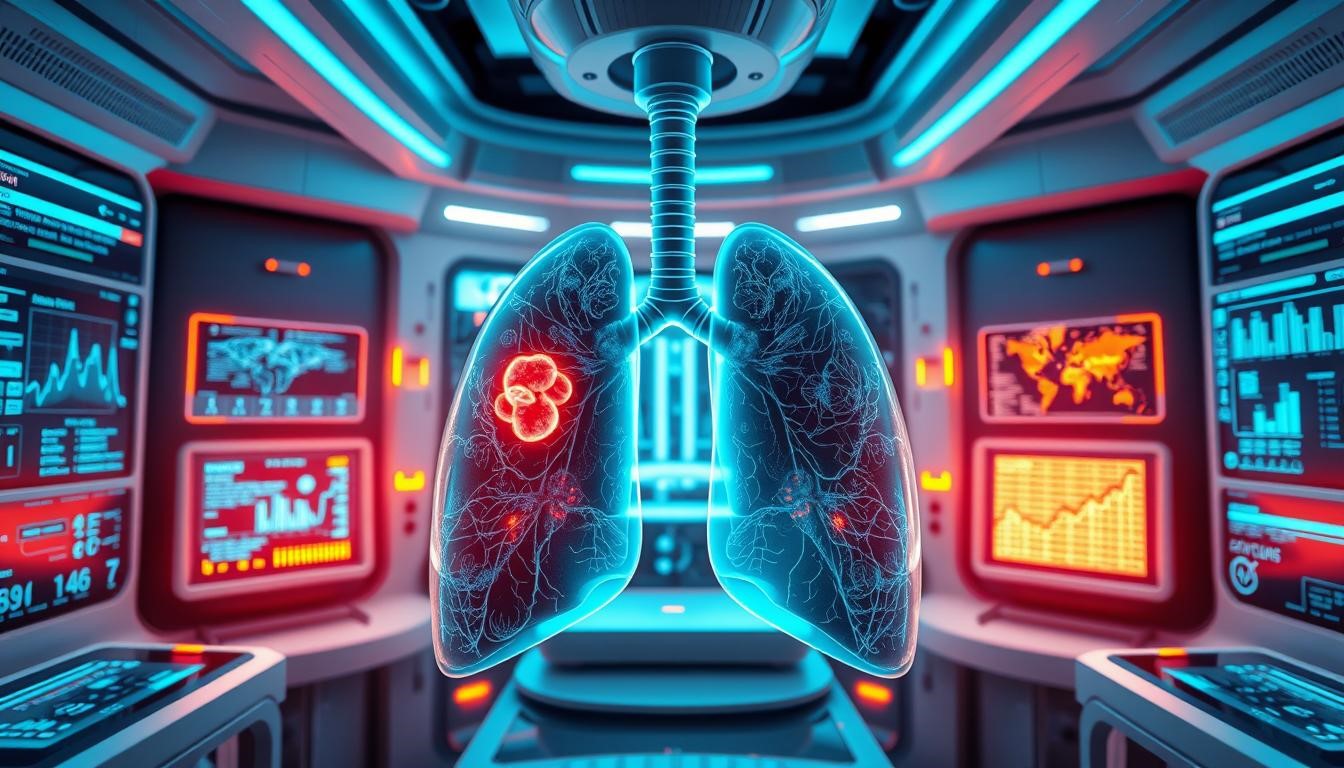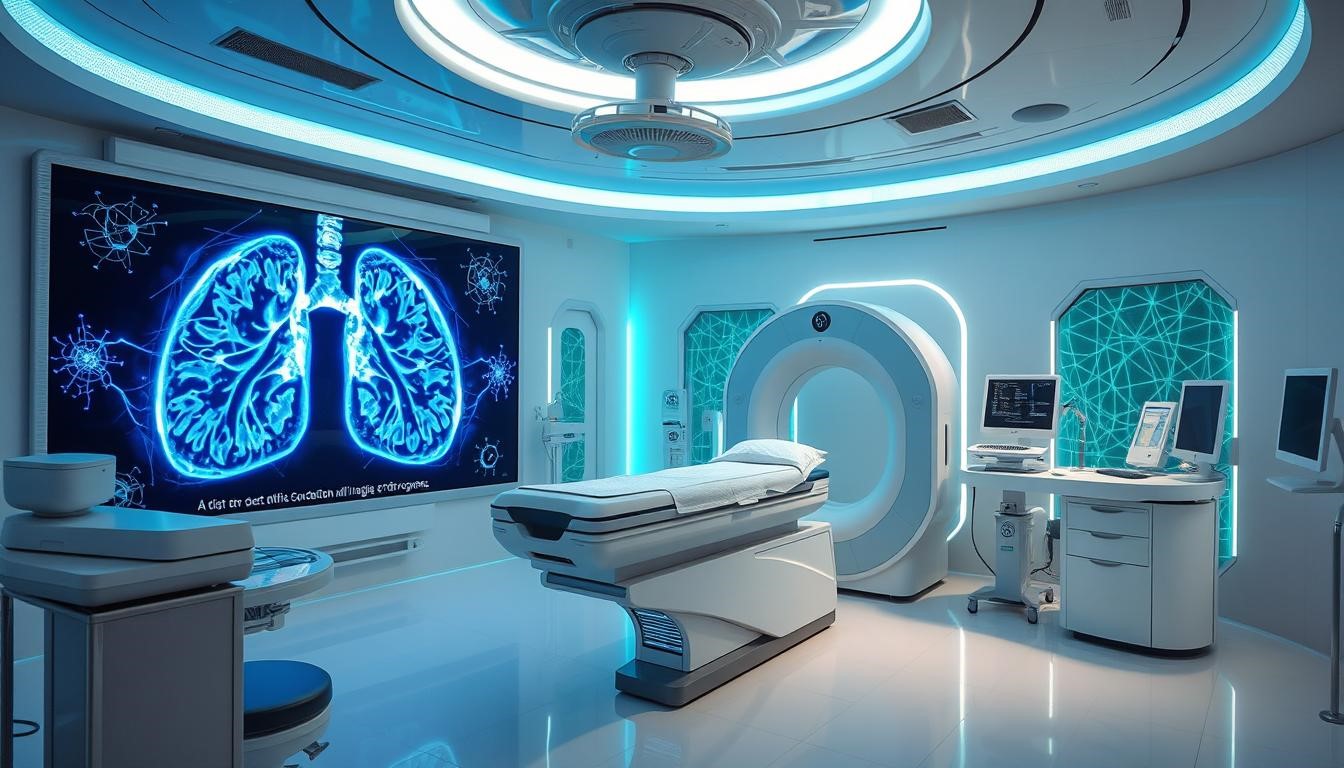The healthcare world is changing fast, thanks to new healthcare technology. Medical imaging is growing a lot, with AI cloud software leading the way.
AI cloud software is making medical imaging better. It helps doctors make quicker and more accurate diagnoses. This tech can look at lots of data, spotting things that humans might miss.
With AI cloud software, healthcare gets better and faster. It changes how we use medical imaging, making it key to modern healthcare.
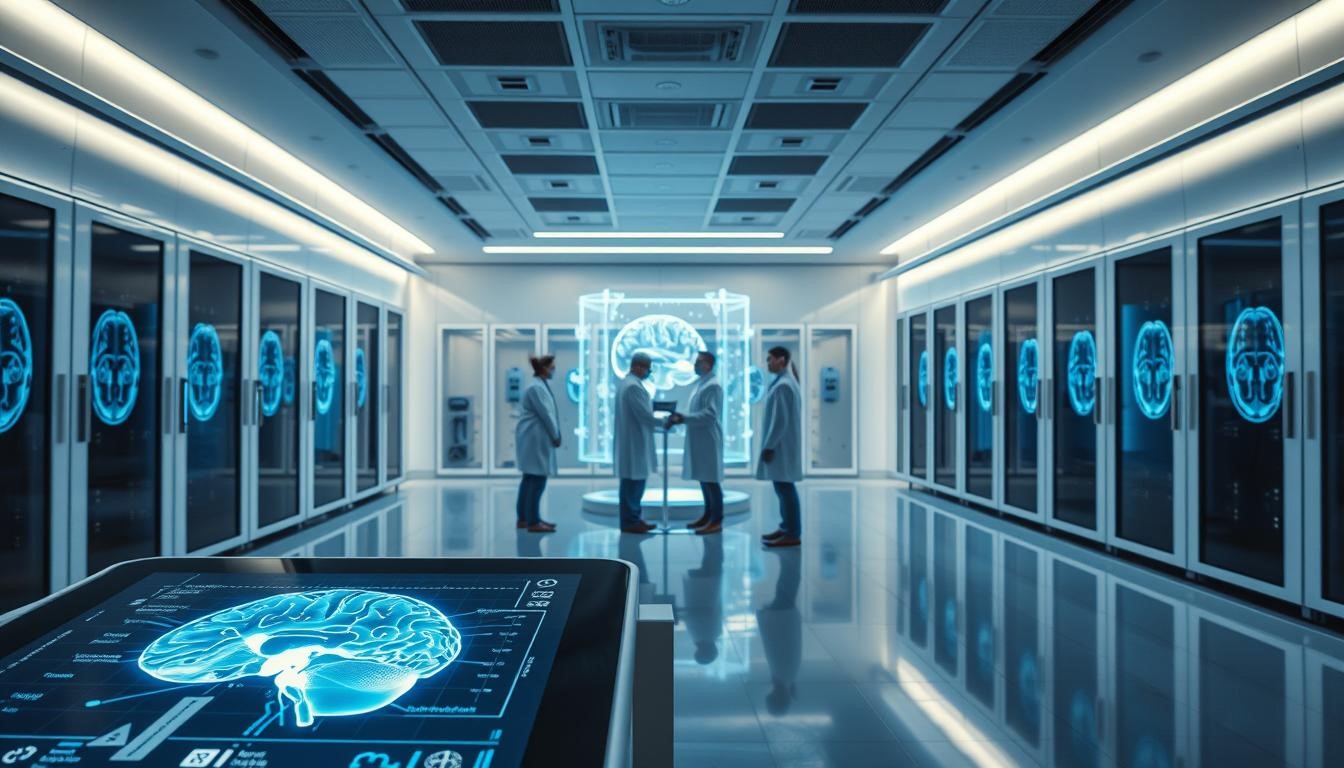
The Evolution of Medical Imaging in Canadian Healthcare
Medical imaging has changed a lot. New technologies and healthcare needs have driven these changes. This has greatly helped in diagnosing and treating many health issues.
Historical Development of Diagnostic Imaging
The journey of medical imaging in Canada started in the early 1900s with X-rays. Later, Computed Tomography (CT) scans, Magnetic Resonance Imaging (MRI), and Positron Emission Tomography (PET) scans were introduced. These advancements have made diagnoses more accurate, helping patients get better care.
Current Adoption Rates Across Canadian Provinces
How much medical imaging technology is used varies by province. This depends on the healthcare system and funding. Places like Ontario and British Columbia have invested a lot in these technologies. This has improved healthcare services there.
Some key facts are:
- Many MRI and CT scans are used in cities.
- Telemedicine for imaging consultations is becoming more common.
- Rural areas face challenges due to less access to advanced imaging.
Challenges Facing Traditional Medical Imaging Systems
Traditional medical imaging systems are key to healthcare but face many challenges. These issues affect their ability to work well. They include problems with accuracy and managing data.
Diagnostic Accuracy and Human Limitations
Getting a correct diagnosis is hard with old medical imaging. People can make mistakes due to tiredness or different ways of seeing things. Improving diagnostic accuracy means better training and using technology to help doctors.
Workflow Efficiency and Processing Bottlenecks
Old systems are slow and have many steps. They often use manual processes and don’t talk to each other well. This makes getting results take too long.
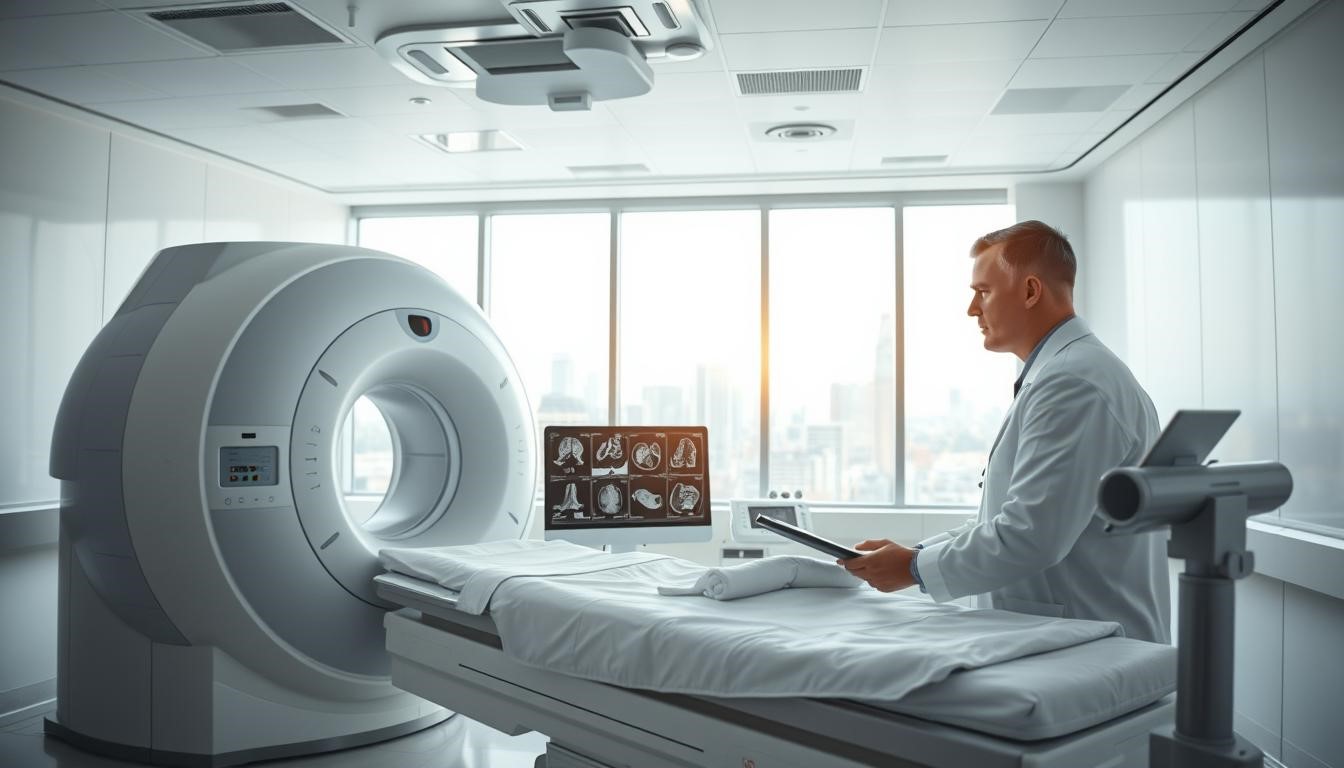
Data Management and Accessibility Issues
Handling and sharing medical images is a big problem. These systems deal with a lot of data but struggle to manage it. Making data systems better is key to improving medical imaging services.
Knowing these problems helps us see why new solutions like AI cloud software are needed. They can solve these issues and change medical imaging for the better.
How AI Cloud Technology Transforms Medical Imaging
Medical imaging is changing a lot with AI cloud technology. It’s making diagnosis better, making work flow smoother, and changing how images are looked at and stored.
Core AI Technologies in Imaging Analysis
The main change comes from AI, like machine learning and deep learning. These are used for analyzing images.
Machine Learning Algorithms for Image Recognition
Machine learning helps spot problems in medical images. It gets better with more data, making it very accurate.
Deep Learning Networks for Pattern Detection
Deep learning finds patterns in images that humans might miss. This helps catch diseases early.
Cloud Infrastructure Advantages
Cloud technology brings benefits like being able to grow and change easily. It’s also cheaper. It makes storing and getting medical images safe and simple.
Integration with Canadian Healthcare IT Systems
AI cloud tech is being added to Canadian healthcare systems. This makes sharing data and working together better. It’s key for better care and results.
With AI cloud software and cloud infrastructure, Canadian healthcare can do more. They can make diagnoses better and make work easier. Artificial intelligence in medical imaging is changing the game, leading to better care for patients.
Key Benefits of AI-Powered Medical Imaging Solutions
AI is changing how we diagnose and care for patients. It uses advanced algorithms and cloud tech to improve medical imaging.
Enhanced Diagnostic Precision and Reliability
AI makes medical imaging more accurate and reliable. It can spot details that humans miss, cutting down on mistakes. For example, AI finds small issues in X-rays and scans, helping patients get the right treatment fast.
Key advantages include:
- Improved detection of early-stage diseases
- Enhanced accuracy in complex diagnoses
- Reduced variability in diagnostic interpretations
Streamlined Clinical Workflows and Time Savings
AI also makes clinical work easier and faster. It handles routine tasks, letting doctors focus on more important work.
The benefits include:
- Faster turnaround times for diagnostic reports
- Improved workflow efficiency in radiology departments
- Enhanced patient throughput in medical imaging centres
Cost Efficiency and Resource Optimization
Using AI in medical imaging saves money and resources. It cuts down on unnecessary tests and uses resources wisely, helping healthcare budgets.
Cost-saving benefits include:
- Reduced operational costs through automation
- Lower costs associated with diagnostic errors
- Optimized resource allocation in healthcare facilities
Real-World Applications in Canadian Medical Imaging Centers
AI cloud software is changing medical imaging in Canadian healthcare. It’s making a big difference in how medical imaging centers work.
Case Studies from Leading Canadian Hospitals
Many top Canadian hospitals are using AI in their imaging. They’ve seen big improvements in how fast and accurate diagnoses are. For example, a big hospital in Toronto used AI to look at MRI scans. This cut down diagnosis time by 25%.
- Enhanced image analysis capabilities
- Improved patient throughput
- Better resource allocation

Impact on Patient Outcomes and Care Quality
AI in medical imaging is helping patients get better care. It lets doctors find diseases earlier and make more accurate diagnoses. This leads to better treatment plans and care for patients.
- Reduced wait times for diagnostic results
- Improved diagnostic accuracy
- Enhanced patient satisfaction
Compliance with Canadian Healthcare Regulations
Canadian medical imaging centres are using AI while following strict rules. They make sure to keep patient data safe and follow privacy laws.
By using AI cloud software, Canadian healthcare is getting better at imaging. They’re also making sure they follow all the rules. This keeps patient data safe and builds trust in the healthcare system.
Future Innovations in AI-Driven Medical Imaging
Medical imaging future is bright, thanks to AI. New AI technologies are changing healthcare for the better. They promise to make healthcare services better and faster.
Predictive Analytics for Early Disease Detection
Artificial intelligence is changing how we find diseases early. AI looks through lots of medical images to spot health problems before they get serious.
Cross-Modality Integration and Analysis
AI is also improving by mixing data from different scans. For example, MRI and CT scans together give a clearer picture of a patient’s health. This leads to more accurate diagnoses.
Personalized Medicine Applications in Canadian Healthcare
AI is key in making healthcare more personal. It looks at each patient’s data to create the best treatment plans. This makes patients healthier and saves money.
These new technologies will make healthcare even better. They promise to improve care quality and make healthcare more efficient.
Conclusion
AI cloud software is changing healthcare. It uses advanced AI and cloud tech to make medical imaging better. This leads to more accurate diagnoses, smoother workflows, and lower costs.
AI cloud software is set to change how we care for patients. It can look at complex medical images to help improve health outcomes and care quality.
The future of medical imaging with AI looks bright. We’ll see new uses in predictive analytics, combining different imaging types, and personalized medicine. As world keeps adopting these tech advancements, patient care will get even better.
FAQ
What is AI cloud software and how is it used in medical imaging?
AI cloud software uses artificial intelligence and cloud computing to analyze medical images. It makes diagnoses more accurate and makes clinical work easier. Companies like Google Cloud and IBM are leading this technology.
How does AI cloud software improve diagnostic precision in medical imaging?
AI cloud software uses machine learning to look at medical images. It finds patterns and problems that humans might miss. For example, NVIDIA’s AI solutions help improve image analysis.
What are the benefits of using cloud infrastructure for medical imaging?
Cloud infrastructure is scalable and saves money. It also makes sharing medical images easier. This helps healthcare providers give better care and avoid unnecessary tests.
How does AI cloud software comply with Canadian healthcare regulations?
AI cloud software must follow Canadian laws, like the Personal Health Information Protection Act (PHIPA). Companies like Microsoft and Amazon Web Services (AWS) have strong security to protect patient data.
What are the future innovations in AI-driven medical imaging?
Future advancements include predictive analytics and personalized medicine. These will help doctors find diseases early and treat patients better. It’s a big step forward for medical imaging.
How will AI cloud software impact patient outcomes in Canadian healthcare?
AI cloud software will make diagnoses more accurate and workflows smoother. It will also help with personalized medicine. Studies show it can lead to better patient care and lower costs.
What are the key challenges facing the adoption of AI cloud software in medical imaging?
Challenges include managing and accessing data, and integrating with current IT systems. Overcoming these will be key to fully using AI cloud software in medical imaging.

